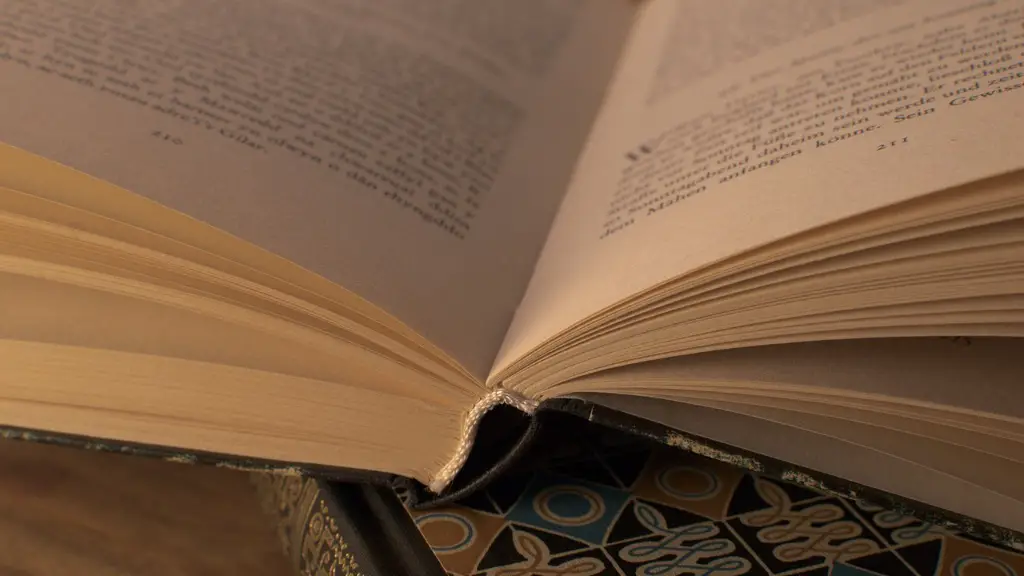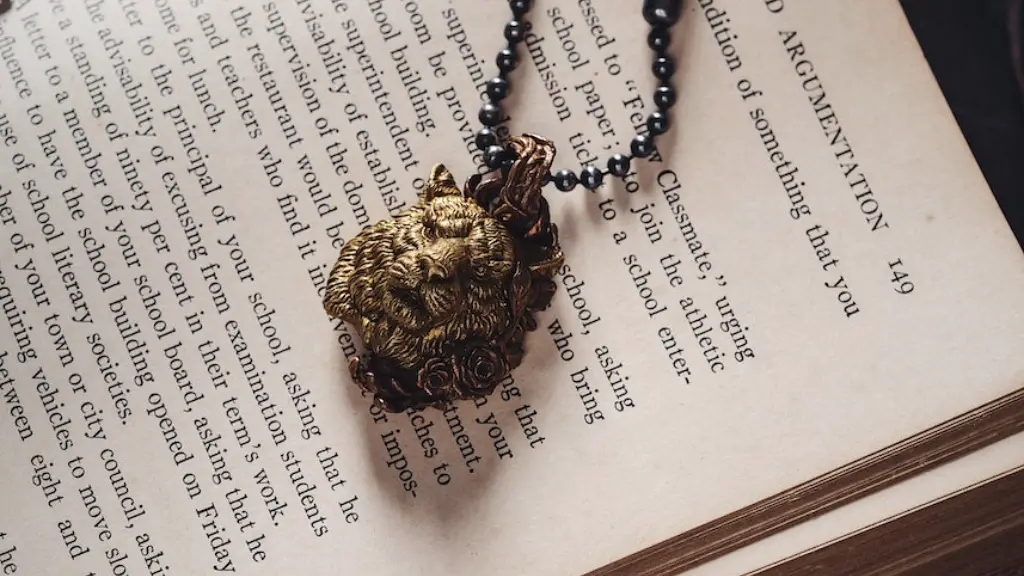Verse poetry is usually written in one of two forms: free verse or structural verse. In free verse, the poet is free to use whatever poetic devices and structures they want, within a certain rhythm or meter. Structural verse is a more regulated form of poetry which involves the use of strict guidelines such as sonnets, villanelles, sestinas and haiku. These poems have specific forms, and each line and stanza may be required to repeat particular words or syllables.
Although verse poetry is traditionally used to convey a narrative or story, in its modern form it often strays away from traditional conventions, allowing a wider range of interpretations and emotions. Poets now often use free verse form to explore a variety of topics, ideas, and themes. Some of the most popular themes used in verse poetry today include love and relationships, nature, abstract topics such as loneliness, and social and political issues.
In addition to its lyrical qualities and melodic structure, verse poetry is also known for its emotion-creating abilities. Through its rhymes and rhythms, the poet can create a sense of empathy with their readers, connecting the audience to their own feelings and emotions. This is done by emphasizing certain words and phrases, using a variety of punctuation marks and repeating certain words or phrases. Additionally, poets often choose to add metaphors, allegories, and personification to their work in order to further evoke emotion and make their message more profound.
Another key element of writing verse poetry is its use of imagery. This involves the poet deliberately creating vivid images in the readers mind, enabling them to further understand the poem. Imagery can be used to bring life to the poem, setting a scene and giving the reader an opportunity to immerse themselves into the words. Examples of imagery commonly used in verse poetry include but are not limited to; similes, metaphors and personification.
Verse poetry is an incredibly powerful form of expression, allowing the poet to connect deeply with their reader and joining them in a shared moment of emotional understanding. It is a way to tell stories and articulate ideas, while also providing an ever-changing platform for creative exploration and theatricality.
Exploring Emotion with Verse Poetry
One of the key aspects of writing verse poetry is its ability to emotionally move the reader. Poets can use the power of words to elicit an intense emotional response in readers, and by using a variety of poetic devices and techniques, the poet can create a heightened emotional experience.
One such technique that is widely used in verse poetry is the use of rhyme. Rhyme is defined as a repetition of the same sound or syllables in words that are placed close together in the same line. It is a powerful tool that can be used to connect words and lines together, allowing the poem to paint a vivid picture in the reader’s mind. For instance, a poet could use strongly contrasting words that, when followed by a rhyme, create a powerful and intriguing effect.
Another powerful tool used in verse poetry is metaphor. Metaphors involve comparing two unrelated things or ideas in order to create an image or feeling in the readers mind. They are often used to create a powerful connection between the unrelated objects or ideas, allowing the poet to convey their message more effectively.
Furthermore, poets have also been known to employ personification in their verse poetry. Personification is a technique that involves endowing inanimate objects with human attributes. This allows the poet to make a strong emotional connection with the readers and helps to bring the poem to life.
Rituals in Verse Poetry
Verse poetry has long been used as a tool to connect people to one another and express their feelings. Throughout history, verse poetry has been used as part of ritual ceremonies, to evoke emotions and intensify the experience for everyone involved. In many cultures, verse poetry is used to deepen the experience of religious rituals, weddings and funerals.
In some parts of India, verse poetry forms part of Hindu marriage ceremonies and is used to celebrate and honor the new couple. During these ceremonies, a special kind of verse poetry known as Vedic poetry is used to express the emotion and beauty of the marriage. Similarly, in Native American culture, verse poetry is used as part of coming of age rituals, in order to mark the transition of young people into adulthood.
Verse poetry is also used to mark transitions and celebrate important events in other cultures, such as Chinese New Year and the Jewish holiday of Passover. Additionally, it has recently seen a revival in the West, as more people turn to verse poetry to mark important life events, such as funerals, new baby arrivals, graduations, and anniversaries.
The Power of Verse Poetry
Verse poetry has been used for thousands of years as an effective means of conveying emotion, creating vivid images and expressing thoughts and stories. It is a powerful art form that can be used to communicate a range of topics, from the mundane to the profound, from the everyday to the exceptional, from the secular to the spiritual.
The power of verse poetry lies in its ability to move the reader and create a deep emotional connection. Whether it is used as part of a spiritual ritual or to honor a life-changing event, the beauty and power of verse poetry sings off the page.
Verse as Performance Art
Verse poetry is not only used as a form of expression for private contemplation, it can also be used as a powerful form of performance art. Poets take to the stage and recite their verse poems as an act of self-expression and a means of engaging with an audience.
In recent years, live verse poetry has become increasingly popular, and some cities, such as New York, Los Angeles, and London, have their own “spoken word” scenes. These are vibrant communities in which poets of all backgrounds, experiences and levels of ability can come together to share and perform their work. These events often provide a platform for established and new poets to share their work in a safe and supportive environment.
In addition to reading their work, some poets also choose to perform a “poetry slam”, where they compete against one another to deliver a performance of their poem. The winner of the slam is determined by the audience, who then reward the best performance.
The Growth of Verse Poetry in Education
It is now more common for young people to be exposed to verse poetry in the classroom, as more and more schools are incorporating the practice into their curriculums. Not only does verse poetry help students to understand language and its use, it also encourages creative thinking and exploration of emotions.
In some US states, such as California, studying poetry has been made mandatory in all high school English classes, and in the UK, poetry is studied in English Literature classes. These studies are designed to broaden the student’s minds, enabling them to think critically, use their imagination and explore the world around them.
The emphasis on studying poetry in education is also reflective of a renewed focus on the arts in recent times. Poetry has become a tool to help young people express themselves and navigate the world around them.
Verse Poetry’s Impact on Writing
The popularity of verse poetry has led to an increase in awareness and use of rhyme and other poetic techniques within other genres of writing. Some authors, such as Kurt Vonnegut, have experimented with incorporating elements of verse writing into more traditional narrative forms, creating a hybrid that appeals to those who are new to poetry.
The technique of ‘flash fiction’, which is a very short story that packs emotion and action into a few lines, is also becoming increasingly popular and is often rooted in the structure and format of verse poetry. Authors such as Hemingway have cast their stories in a very lyrical style, using similarly poetic writing techniques such as rhythm and metaphor to trick the reader into feeling an intense emotion in a small period of time.
As a result, the popularity of verse poetry has had a lasting impact on how writers approach the art of storytelling.
Conclusion
Verse poetry is an incredibly powerful form of expression that has been used across cultures for centuries. It is a way to evoke emotion, create imagery, and tell stories. It is a tool to move the reader and bring the written word to life. From its use in rituals to its modern form in education and literature, verse poetry is an ever-evolving art form that continues to challenge, inspire and enlighten.

